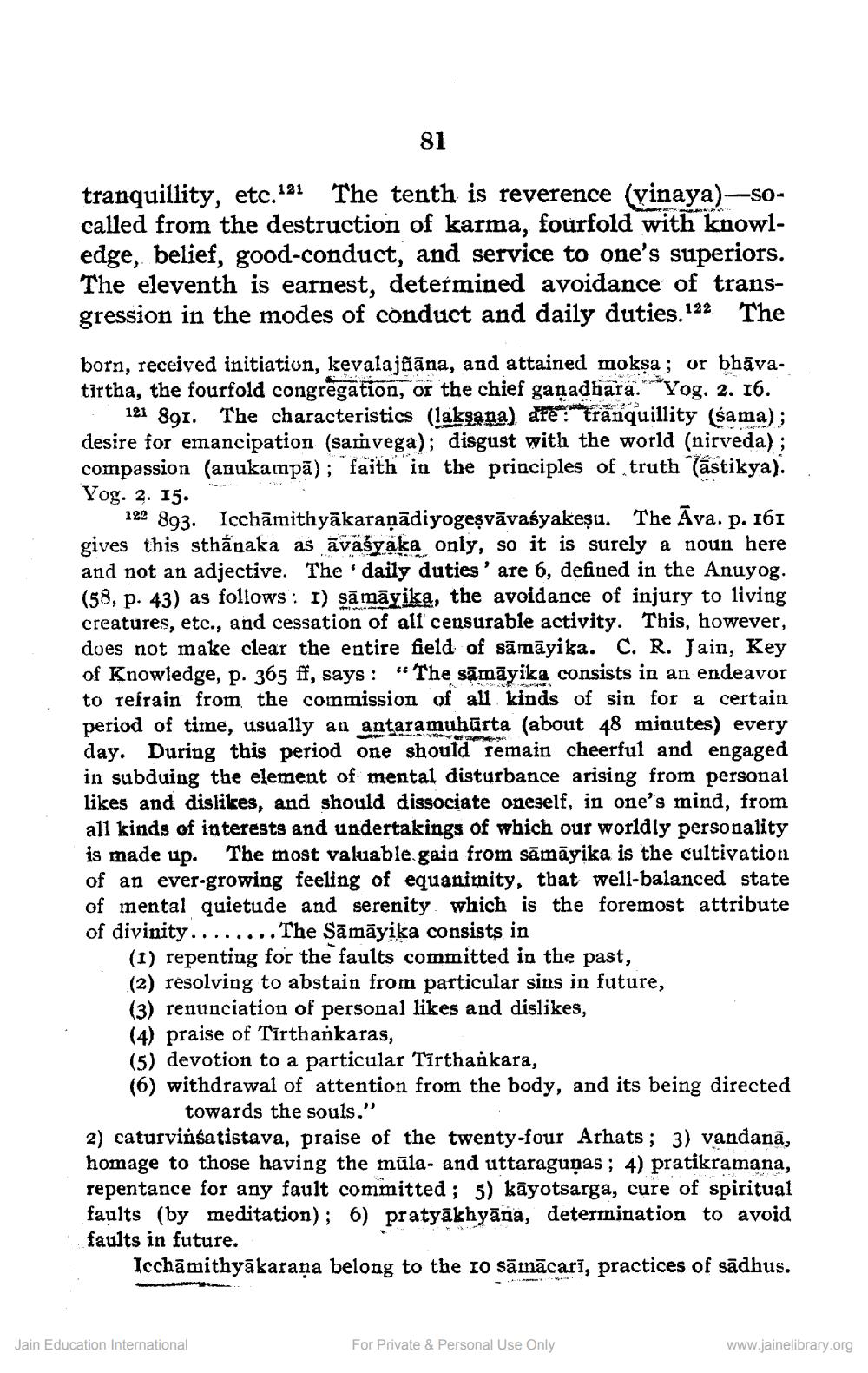________________
81
tranquillity, etc.121 The tenth is reverence (yinaya)—SOcalled from the destruction of karma, fourfold with knowledge, belief, good-conduct, and service to one's superiors. The eleventh is earnest, determined avoidance of transgression in the modes of conduct and daily duties.122 The
born, received initiation, kevalajñāna, and attained mokşa; or bhāvatirtha, the fourfold congregation, or the chief gañadhara. Yog. 2. 16.
121 891. The characteristics (laksana) are tranquillity (sama); desire for emancipation (samvega); disgust with the world (nirveda); compassion (anukampā); faith in the principles of truth "lästikya). Yog. 2. 15.
122 893. Icchāmithyākaraņādiyogeşvāvaśyakeșu. The Āva. p. 161 gives this sthānaka as āvašyaka only, so it is surely a noun here and not an adjective. The daily duties' are 6, defined in the Anuyog. (58, p. 43) as follows: 1) sāmāyika, the avoidance of injury to living creatures, etc., and cessation of all censurable activity. This, however, does not make clear the entire field of sāmāyika. C. R. Jain, Key of Knowledge, p. 365 ff, says: "The sāmāyika consists in an endeavor to refrain from the commission of all kinds of sin for a certain period of time, usually an antaramuhärta (about 48 minutes) every day. During this period one should remain cheerful and engaged in subduing the element of mental disturbance arising from personal likes and dislikes, and should dissociate oneself, in one's mind, from all kinds of interests and undertakings of which our worldly personality is made up. The most valuable gain from sāmāyika is the cultivatio of an ever-growing feeling of equanimity, that well-balanced state of mental quietude and serenity which is the foremost attribute of divinity..... ... The Sāmāyika consists in
(1) repenting for the faults committed in the past, (2) resolving to abstain from particular sins in future, (3) renunciation of personal likes and dislikes, (4) praise of Tīrthankaras, (5) devotion to a particular Tirthankara, (6) withdrawal of attention from the body, and its being directed
towards the souls." 2) caturvinsatistava, praise of the twenty-four Arhats; 3) vandanā, homage to those having the mūla- and uttaraguņas; 4) pratikramana, repentance for any fault committed ; 5) kāyotsarga, cure of spiritual faults (by meditation); 6) pratyākhyāna, determination to avoid faults in future.
Icchāmithyākarana belong to the io sāmācarı, practices of sādhus.
Jain Education International
For Private & Personal Use Only
www.jainelibrary.org




